Tabebuia Tree: How to Grow and Care
The Tabebuia tree will be a perfect choice if you want a tree to grow in your garden. You will love it if you like ornamental trees with showy, colorful flowers. Its pink or bright yellow flowers will get the attention of your neighbors and the people passing by your house or garden. However, if you do not know how to care for a Tabebuia tree or even do not know what it is, you have nothing to worry about. In this article, I will explain everything you should know about growing and caring for a Tabebuia tree.
What is a Tabebuia Tree?

You might not have heard of Tabebuia, but you probably heard of the trumpet tree. A Tabebuia tree is a middle-sized deciduous ornamental tree that grows around fifteen to thirty feet tall and forty feet wide. It is best identified with its blooming trumpet-like flowers. These showy flowers hang in clusters and are one to four-inch-wide. They are also tubular and lightly frilled with stamens at the top. The Tabebuia tree’s flowers are the reason why it is sometimes called trumpet tree by some people. These trumpet-like flowers are mostly either pink or a bright yellow, giving the yellow-flowered kind of this tree another name: tree of gold.
What is more fascinating is that this ornamental tree with striking flowers drops its foliage immediately before bursting into bloom, leaving it looking all-pink or all-golden. Most people also prefer tabebuia trees with purple and silver-colored flowers. So now you know what a Tabebuia tree is, I will be explaining how you should grow and care for it.
Tabebuia Trees for Sale on Amazon (See the prices)
How to get seeds of the Tabebuia tree?
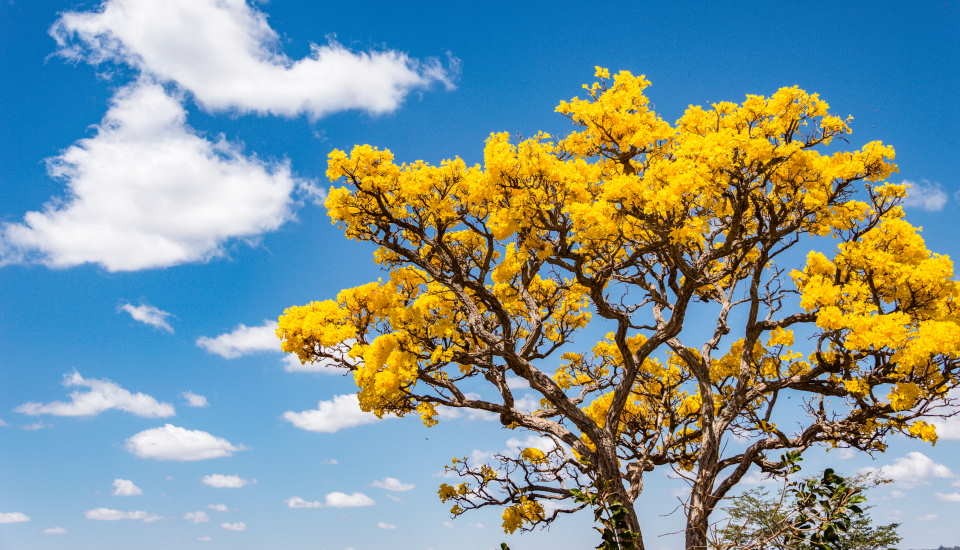
There are over a hundred species of Tabebuia trees. However, only four of them are common. As mentioned before, pink and yellow-flowered species are the most preferred. You can easily purchase both species’ seeds from your local garden products store. The other two common species’ flowers are in purple and silver color. Also, online stores are always a good option if you cannot find what you are looking for in your local garden products store.
Are Tabebuia Trees growable in the climate zone of where you live?
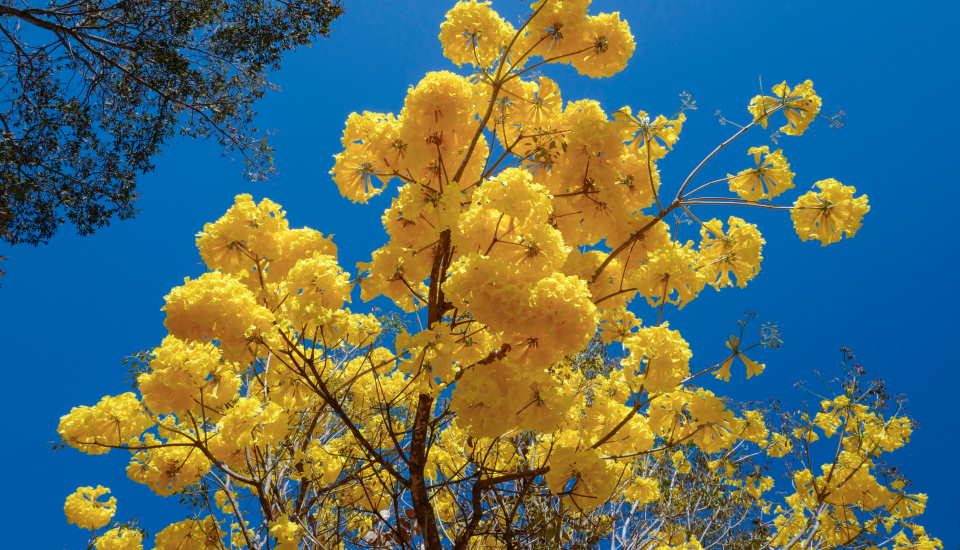
Tabebuia trees are native to Central America’s American tropics and subtropics. That is why the hardiness of the Tabebuia tree is an important feature before considering growing the plant. Tabebuia tree loves and thrives in humid and warm climates. It mostly cannot be grown in climate zones under 30 Fahrenheit since a hard freeze will likely kill the plant. So, it is most suitable for the United States Department of Agriculture (or shortly USDA) zones 10, 11, and warmest regions of 9. It is ideal for Central and South Florida landscapes in the United States.
When and where to plant your Tabebuia Tree?
Like most other plants, early spring is the best time to plant a Tabebuia tree. Tabebuia trees must be planted somewhere where they could get at least six to eight hours of full sun daily. However, if you live in a cooler climate and still want to grow a Tabebuia tree, you can grow a Tabebuia tree in a container during the warm months of spring and summer.
You will need to bring the plant indoors with its container in the fall before the cold months start. So, if you are growing a Tabebuia tree in a cooler climate, it will need more of your attention and care than usual. However, it will be more difficult to carry your plant with its container indoors and outside after a while. So, to prevent your plant from growing in size, you should prune your plant regularly.
Regarding soil preference, Tabebuia trees require soil with good drainage and excellent nutrient content. The soil must be well-drained, slightly acidic, and slightly alkaline. If the soil is not well-drained, your plant will not grow the way it should, and it will most likely have fewer blooms than expected normally. Poorly drained soil might even result in diseases and eventually the death of your plant.
How to take care of your Tabebuia Tree?
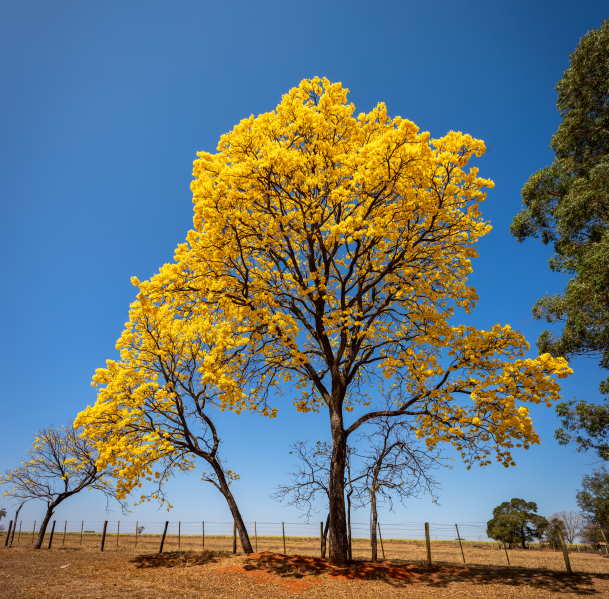
While the environment that the Tabebuia tree will grow in is of primary importance, it is also important that your plant gets loving care. Even if the soil you planted your Tabebuia tree in had an excellent nutrient content in the first place, it later would need to get more nutrients to grow through.
So, you should fertilize the soil every two or three months during your plant’s growing season. Even if not every two or three months, fertilizing your plant at least every spring will help its growing process. Thanks to fertilizers, it will be able to establish a good root system, and as a result, you will get a healthy and abundant blooming. Also, remember that 16-4-8 fertilizers are the best for Tabebuia trees.
Please note that Tabebuia trees need around three years to be grown from seed to produce their flowers. It would be best if you were fertilizing the soil of your plant during these three years so that your plant will be able to establish a good root system and produce healthy flowers.
Once your tree is established, it will not need regular fertilization as it used to unless there is a specific reason to do so. If you keep fertilizing your plant after the three years of planting, your plant’s foliage growth will increase, and as a result, you will have fewer blossoms. So, it is best not to fertilize an already established plant if it is not needed.
How to water your Tabebuia tree?
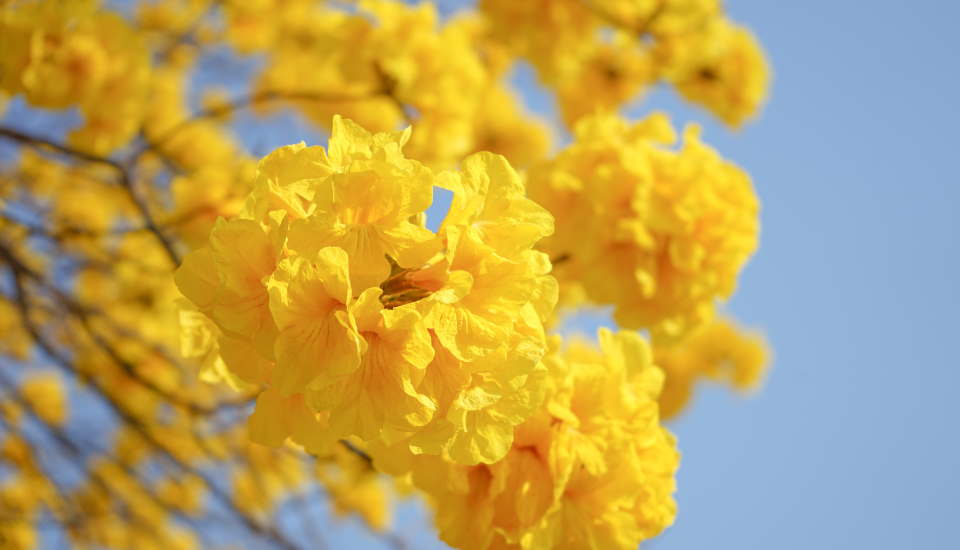
Water is of importance for your plant’s growth and health. You must establish a regular and thorough watering schedule to help your Tabebuia tree have deep and strong roots. For the first two months, you will need to water your plant as often as twice a week. Once your tree grows and becomes established, you can water it once a week.
You should water your plant only once every two weeks by the end of the year. Finally, your plant will need occasional watering only during dry seasons after the growing season. Also, you should keep in mind that you should be watering your plant only when the top three centimeters of the soil have dried out. If you overwater your plant, it might result in the rotting of your plant’s roots and, finally, its death. You can also use the deep watering technique. You can water your plant slowly, and for longer periods, so the water goes deep into the soil. That way, your plant will have a well-established and healthy root system.
How to prune your Tabebuia Tree?
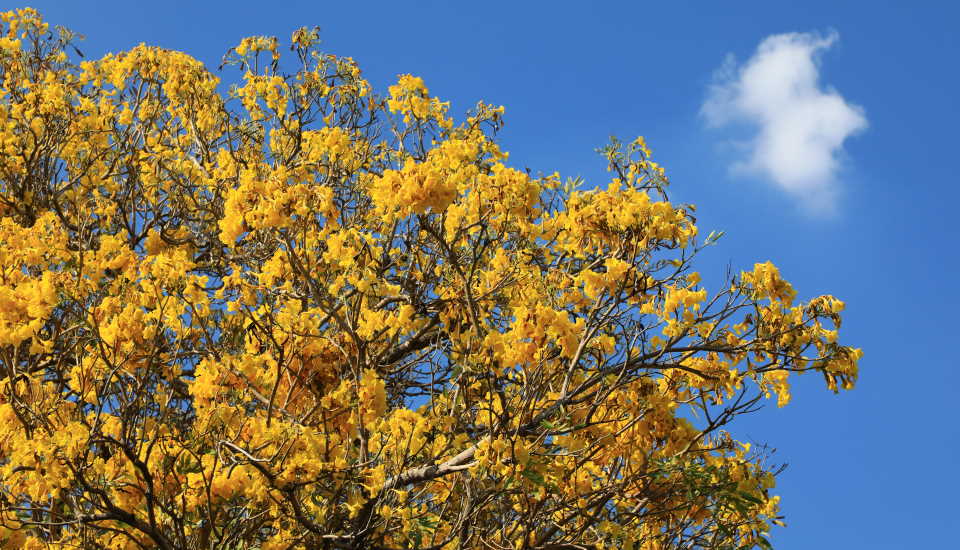
Tabebuia trees do not require pruning a lot. As your Tabebuia tree matures, it maintains its natural pyramidal crown shape that gradually expands. However, you sometimes might need to prune the dead and damaged branches to help your plant grow healthy. If you want to care for your Tabebuia tree more, you can prune back branches to maintain your tree’s shape and size. Also, it is best to prune your Tabebuia tree only during the dormant periods.
How to fight pests and diseases affecting your tree?
Fighting pests and diseases might be the hardest to do while caring for a plant. However, Tabebuia trees are mostly resistant to pests and diseases. Still, one of the pest issues you will be facing is a small flying creature called Tabebuia thrips (or Holopothrips sp.). These kinds of pests are not considered dangerous, but they will still cause cosmetic leaf damage to your plant. You can get rid of these small creatures by pruning your plant’s damaged leaves or branches.
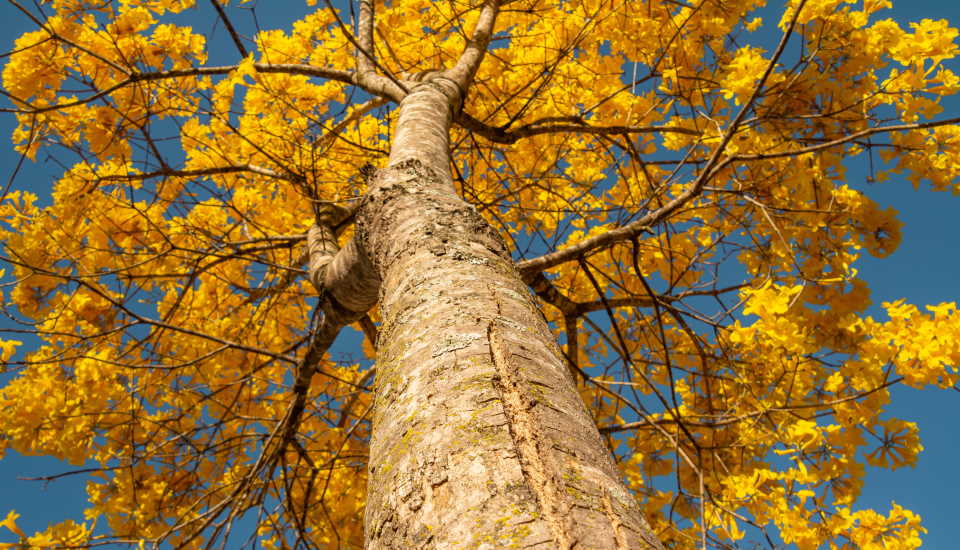
Red spider mites are another pest issue you might face and need to take care of while growing a Tabebuia tree. It is also pretty hard to get rid of them since these pests are reproducing rapidly despite living only for a short time. Most of the time, they also cannot be seen with the human eye since a red spider mite is as small as a grain of sugar.
Even though there are many ways to get rid of red spider mites, using their natural predators is the best solution. Lacewings and ladybugs will do an excellent job of getting rid of red spider mites. If you are not available to obtain these natural predators to get rid of red spider mites, you can use pesticides instead. Insecticidal soaps and oils will work the best. However, it would be best to be careful while using pesticides since they might also kill natural predators like lacewings and ladybugs.
If your plant has yellowing leaves and visible slow growth, you might be overwatering your plant. Of course, every plant needs water, but watering them more than they need to will cause many problems. As I mentioned, you should establish a regular watering schedule for your plant. More importantly, it would be best if you were not watering it more than it needs. Overwatering your plant will result in damaged roots with low defense. It would help if you kept in mind that damaged roots are vulnerable to rot-causing soil organisms that will cause the death of your plant. Your plant might also suffer from leaf burn and leaf scorch.
The best way to fight pests and diseases is to care for your plant and work to keep it healthy. For example, it would help if you did not leave debris or dust around your plant. Also, you should ensure that your plant gets enough water but not more than it needs. If you do both of these and take good care of your plant, the possibility of facing pests and diseases will drop greatly.
Propagating your Tabebuia Tree by hardwood cutting
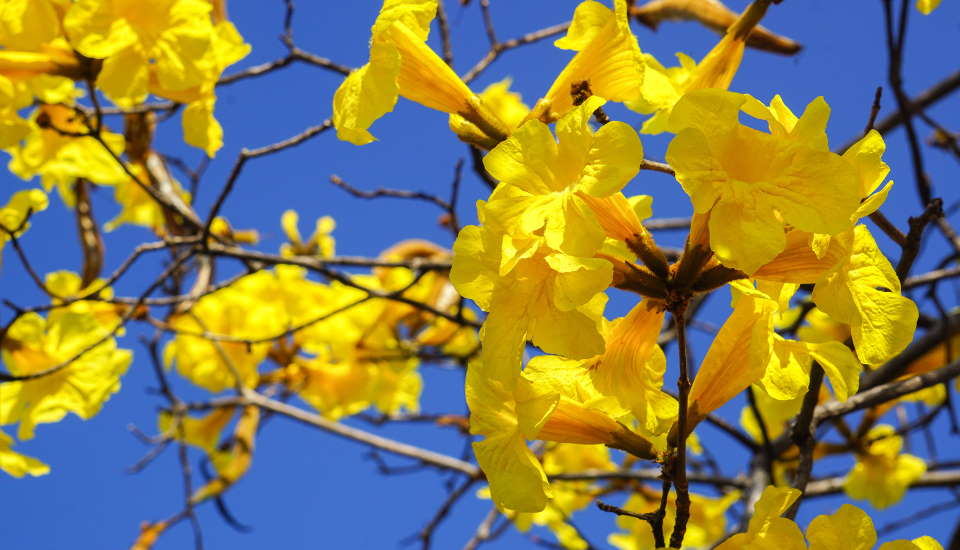
The beginning of spring is the best time for hardwood cutting your Tabebuia tree. You can start by cutting twelve inches long of mature cuts. Later, you should remove the bark from the lower part of the cutting. Once you do this, you can put the cutting in a pot of your choice containing potting soil. Finally, you should water your tabebuia cutting regularly for eight weeks. After those eight weeks, it will have developed roots and be ready for you to transplant it to another container or your garden. You can now take care of your young Tabebuia tree using the methods I mentioned.
Propagating your Tabebuia Tree by using its seeds
Your plant’s seed pods will stay when colder seasons come, and your Tabebuia tree drops its flowers. These seed pods’ size may be anywhere from three to twelve inches. Your Tabebuia tree’s seed pods will gather attention surely, even if not as much as its striking pink or golden flowers. Once these seed pods are cracked open, you can plant your Tabebuia seeds in a small pot or anywhere you like in your garden. However, it is best to plant the seeds in a small pot and later transplant them into the landscape once they are large enough. This way, you can care for your plant easily until it grows enough to have a developed root system.
In conclusion, this article informs you in detail what a Tabebuia tree is and how to grow and care for it. If you did not know what a Tabebuia tree is or were already considering growing one in your garden but did not know how to care, I hope this article has helped you a lot. Now with the information in this article, you should be able to take loving care of your plant.
You may also be interested in:
Texas Redbud Tree: How to Grow and Care

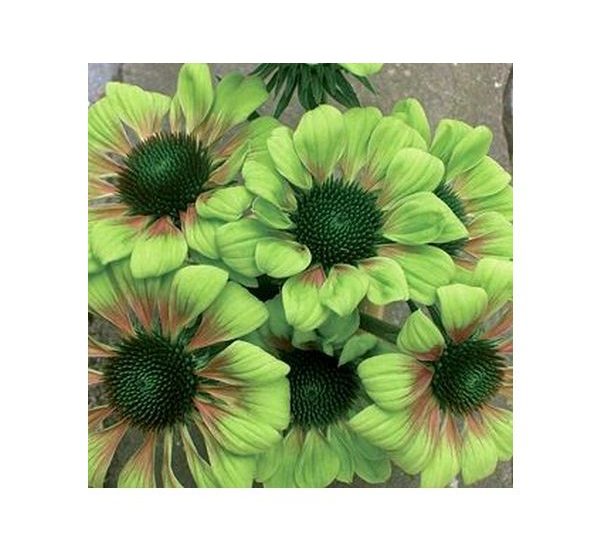
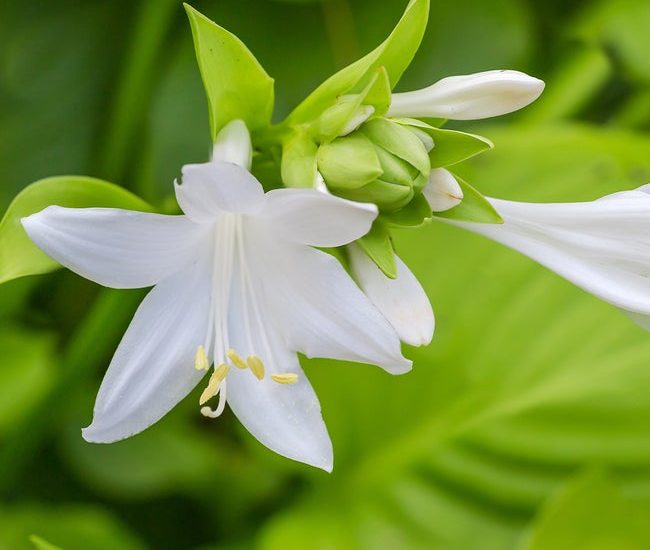
Can you PLEASE help me? I bought some Tabebuia Avellandae seeds from India to Australia and I have tried EVERYTHING to germinate the seeds and nothing has worked! I’ve tried putting the whole seed in soil and covered in platic bag in sun, and the swwd just went mouldy. I tried taking the dark seeds out of the shell thing and planting that and still nothing 😔